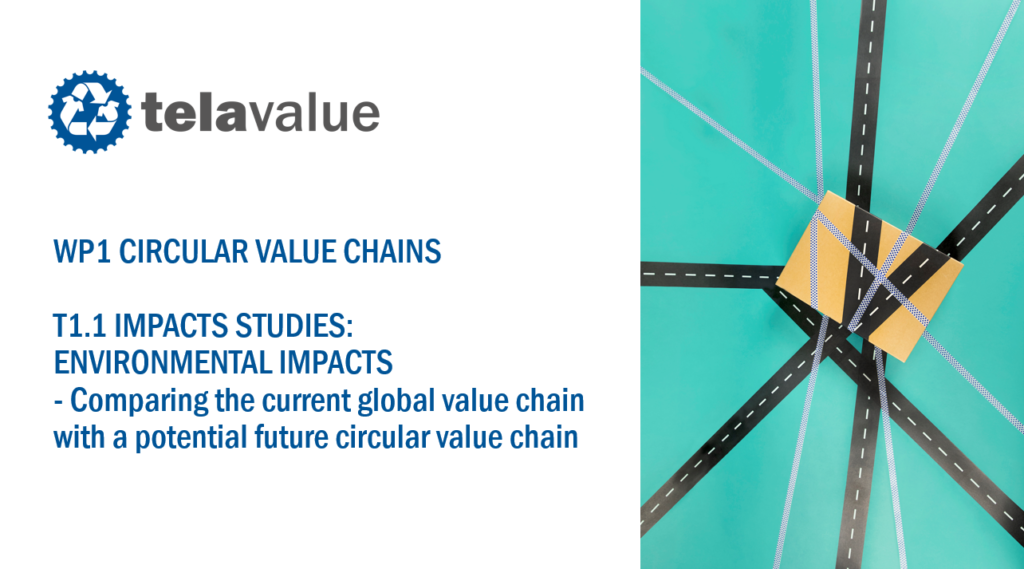Environmental impacts assesment for two value chain scenarios

In the Telavalue project, an assessment of the environmental impact of the product was carried out using two different value chain scenarios. The evaluation used a gray sweatshirt as an example. The value chains used in the work are hypothetical and the values used in the calculation are assumptions or derived from the literature. Assumptions and limitations are presented in the appendix.
In the first scenario, the product was manufactured using a linear value chain, from virgin materials. In the second scenario recycled cotton and lyocell are used as raw materials in the value chain according to the circular economy. Transport methods and manufacturing countries also changed between the scenarios.
Preliminary result was an estimate of the product’s carbon footprint, produced in two different ways. Total carbon dioxide emissions are lower in the circular economy value chain. A large emission reduction comes when the dyeing process of the product is avoided in a circular economy model.
Emissions from fiber manufacturing are reduced by about half. The biogenic carbon balance could not be assessed in this study. In the circular economy model, the total transport distance is smaller, but the increase in the share of truck transport increases transport emissions. The share of transportation in both scenarios are not significant.
As a result of this assignment, it can also be stated that there are several different variables in the value chains in question, which have not been taken into account in our work, and the assessment of their environmental effects should be continued.
